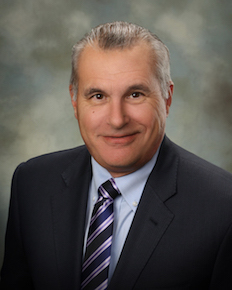The privacy once enjoyed by investors who finance other people’s lawsuits was rarely questioned before Hulk Hogan brought a media spotlight onto the niche industry by winning a $140 million jury verdict that forced the Gawker website into bankruptcy.
When Terry Jean Bollea (the professional wrestler’s real name) filed an invasion-of-privacy lawsuit against Gawker Entertainment in 2013, it was generally assumed that the existence of a litigation finance agreement was nobody’s business other than the plaintiff and their counsel. But after Bollea reached a $31 million post-judgment settlement agreement with Gawker, the press cited confidential sources to report that Silicon Valley tech billionaire Peter Thiel had funded the lawsuit.
Since then, tort reform advocates have made some progress toward requiring more disclosure when litigation funding agreements are used. Wisconsin in 2018 passed a law that requires disclosure of any litigation funding agreement that is in place. West Virginia passed a similar statute in 2019, but regulate only litigation finance agreements with individual consumers, not corporations.
At least two federal court districts — the Northern District of California in 2017 and the New Jersey district earlier this year — have adopted rules requiring disclosure of the existence of any litigation funding contracts in a case.
In the meantime, the American Bar Association has outlined best practices for attorneys who use litigation funders. The California Bar Association has also issued guidance about ethical considerations.

Jonathan H. Colman, a Los Angeles-area insurance defense attorney, discussed those legal developments during the Combined Claims Conference held in Garden Grove, Calif. last month. He said lawyers who aren’t careful when they share information about a case with a litigation funder can potentially open a path for defense attorneys to compel disclosure.
“The concern would be the trap doors for the plaintiff where they inadvertently provide information that violates the attorney work-product privilege or attorney-client privilege,” he said.
The case law is thin. Colman noted only two cases where judges considered whether the identity of litigation funders was relevant to the case, which arguably would make them subject to disclosure through the discovery process.
In a patent lawsuit filed by CXT Systems against several major retailers, Magistrate Judge Roy S. Payne for the Eastern District of Texas ruled in January 2020 that the identify of litigation funders was not relevant to the issue being tried and barred all testimony regarding the source of funding.
But in another patent lawsuit filed by Continental Circuits against Intel Corp. and one of its supplier, Senior U.S. District Judge David G. Campbell in Arizona ordered the plaintiff to provide the defendants with the identity of all persons or entities who had a financial interest in the outcome of the lawsuit. Campbell rejected the defendants’ request to disclose the actual litigation funding agreement and the identities of litigation funders who declined to invest in the case.
“There isn’t a lot of precedent,” Colman acknowledged. “It is certainly getting much more active. When I first looked in 2018, I didn’t have any of these cases.”
He said even though the defense didn’t get what it wanted in the Texas case, it is notable that a federal judge even considered whether a litigation funding agreement might be relevant to the issues at hand.
“There was nothing like this three years ago,” he said.
Abusive litigation?
The U.S. Chamber of Commerce Institute for Legal Reform first sounded an alarm about litigation financing in a white paper published in 2012. The industry has only grown in size and legitimacy since then.
The Chamber’s paper cautioned that third-party funding for lawsuits will increase the amount of abusive litigation because investors will buy an interest across an entire portfolio of cases, including cases that are weak on merits but have a small chance of returning a significant award.
Litigation funding agreements also compromise the attorney-client relationship because the attorney will feel an obligation to maximize the return for investors, which may not always be in the client’s best interest, the Chamber said.
The white paper pointed to one especially seedy story about litigation funding that ended with a criminal contempt conviction of a plaintiff’s attorney.
Investors funded lawsuits against Chevron by indigenous persons in Ecuador for pollution to the Lago Agrio region of the Amazon rainforest. The funding agreement guaranteed a return of at least $55 million to investors even if the court awarded only $70 million, according to the Chamber.
The courts in Ecuador awarded the plaintiffs $9 billion, but in 2014 Chevron persuaded U.S. District Judge Lewis Kaplan in Manhattan to bar enforcement of the award because of corruption. In 2016, Kaplan ruled that attorney Steven Donziger and attorneys for the investors had paid a $500,000 bribe to a judge in Ecuador. He sentenced Donziger to house arrest for criminal contempt.
The 2nd Circuit Court of Appeals in March affirmed five of the six criminal contempt charges against Donzinger, vacating one because it was ambiguous. In the meantime, Donzinger was convicted of separate but related contempt charges and is scheduled to be sentenced for those violations on Oct. 1.
Donzinger had already spent nearly two years under house arrest at his New York City apartment. He said on his Twitter account that Chevron is corrupt and told Esquire magazine that he was targeted by the “most vicious corporate counter attack in history.”
Empirical data
A 2018 research paper published by Cornell Law Review said third-party litigation funding has been a part of the American legal system for more than two decades, but the general public wasn’t widely aware of the industry until the press reported about Thiel’s involvement in the Gawker litigation. Media coverage of the #MeToo movement also increased public awareness.
Stories that focused on alleged abuses by litigation funders attracted the attention of lawmakers, according to the paper, written by law professors Ronen Avrham and Anthony Sebok. The New York Times reported in one story that litigation funders were charging interest rates “as high as” 100%, the researchers said.
Reform legislation followed two streams. Avrham and Sebok said the litigation funding industry generally supported the “transparency” approach taken by Maine, Nebraska, Ohio, Oklahoma and Vermont, which passed laws that explicitly allow litigation funding but impose controls such as standardized contract language, minimum cancellation periods and prohibition against attorney referral fees.
Other states passed laws advocated by tort reform “pressure groups” such as the Chamber of Commerce, the paper says. Arkansas, Indiana, and Tennessee imposed caps on the premiums charged to consumers.
But Avrham and Sebok said there was little empirical data available on which to base public policy. Seeking to fill that gap, the researchers examined 191,144 funded and unfunded litigation finance applications submitted to a major funding firm in order to gain insight about the funders’ “modus operandi.”
The paper says agreements are typically structured in two ways: For sophisticated litigants such as corporations, the litigation funder typically takes a share of the proceeds from a lawsuit after the case is resolved. But litigation funders who finance lawsuits by individual litigants typically structure the agreements as loans that charge a specific interest rate, so the cost increases as long as the litigation remains pending.
The researchers said that on paper, litigation funding agreements typically require the litigants to repay 115% of the amount of money advance for litigation, but after defaults and discounts, or “haircuts,” taken by funders off of the amount owed, the average annual interest rate amounted to 43%.
The authors noted that the rate of return is less than the average amount permitted by Indiana’s litigation funding statute, which allows a maximum interest rate of 36% plus 10% in additional fees.
The authors said litigation finance investors employ a robust underwriting process: 52% of the applications submitted were rejected, either outright or after review. For the cases that were accepted, the funder was repaid more than the amount advanced to the litigant in 88% of cases and 12% of cases ended with a default. Litigation finance investors enjoyed a 91% return on investment, on average.
The researchers said their findings suggest that there are reasons to be skeptical about claims that litigation financing contracts encourage frivolous litigation.
On the other hand, they said litigation finance agreements were often complex and opaque and consumers may benefit from regulations to protect them. For example, more than eight out of 10 of the agreements require the plaintiffs to pay interest that compounded monthly. That has the effect of turning a 42% simple interest loan into a 51% return for a typical case that takes 14 months to resolve.
With those kind of returns, it is no wonder that litigation funding is a fast-growing investment class.
Westfleet Advisors reported that from June 2019 to June 2020, 46 active funds managed $11.3 billion in assets allocated to commercial litigation in the United States, up 18% from the previous year. Total dollars committed to new litigation financing investments grew 6% to $2.47 billion despite court slowdowns caused by the pandemic, Westfleet said in January.
One litigation funder — Burford Capital — is listed on the New York and London stock exchanges (and incidentally pays Sebok, one of the authors of the research report mentioned above, as an ethics advisor.) The company said in its 2020 annual report that it recovered $1.6 billion in assets since its inception in 2016 and earned a 91% return on the capital invested.
Burford said that court slowdowns caused by COVID-19 caused business to slip in 2020, but a new kind of customer helped fill the gap. The company said corporate clients are starting to see the benefits of paying attorneys based on the amount they recover rather than hourly fees, but law firms typically don’t have the balance sheet necessary to pay operating expenses without a steady stream of income.
“Legal finance has grown rapidly over the past decade to bridge this gap,” the report says.
The argument for disclosure
Rules requiring disclosure of litigation finance agreements are not necessarily an impediment to further growth.
Michael McDonald, a finance professor at Fairfield University in Connecticut, operates an investment consulting firm that carefully tracks the litigation finance industry. In a series of articles he wrote in 2017, McDonald said usery laws were the most important factor for states that landed on his list of the “worst states for litigation finance.”
McDonald said usery arguments — the concept that excessive charges for borrowers are improper—can be used to invalidate litigation funding contracts. Colorado courts have held that litigation funding agreements are subject statutory limits, while courts in other states have used different approaches. Some examples:
- Alabama courts have held that litigation financing agreements are a form of “gambling” or speculating in litigation and are therefore void as against public policy.
- A Kentucky statute renders litigation financing contracts void.
- Pennsylvania recognizes the “doctrine of champerty,” which holds that it is improper for a party not involved in a suit, other than attorneys, to have a financial interest in the outcome.
In an email, McDonald said that the litigation finance industry generally resists rules requiring disclosure of funding contracts, but in his view that attitude is short-sighted. He said he expects more jurisdictions to require disclosure in the future.
“Disclosure helps to bring transparency to the situation, and is actually good for all sides—it provides more insight for defendants on who they are up against and the motivations of plaintiffs, and it has some marketing value and very little in the way of stigma for funders/plaintiffs.”
McDonald said he agrees with Colman that courts are increasingly seeing disclosure of litigation funding contracts as a reasonable step. He also agrees that disclosure can create some landmines for attorneys on a case, but that problem will sort itself out over time.
“Once attorneys understand what the requirements are around disclosure and have taken those steps a few times, then mistakes or oversight is less likely to occur,” he said.
Generally, the existence of a litigation funding agreement is protected by the work-product doctrine, which holds that written or oral materials created to prepare for litigation do not have to be disclosed to the adverse party. But that protection is not absolute. It can waived if the other side shows an undue hardship or substantial need. Also, an attorney can inadvertently waive the protection by disclosing the information to a third party, such as a litigation funder.
Ethics guidance
The courts have been divided on when privilege is waived, but professional organizations are urging lawyers to use caution. In August 2020, the American Bar Association published a report that outlines best practices for attorneys to consider before entering litigation funding arrangements. The report says that attorneys should assume “that the litigation funding arrangement may well be examined by a court or the other party at some point in litigation.”
The California State Bar Association also issued guidance on litigation funding last year. In a formal opinion, the Bar reminded attorneys that their first and foremost duty of loyalty is to their client and the funder cannot be allowed to interfere with the litigation. Attorneys must obtain their clients informed consent before sharing any confidential information.
Some courts are requiring disclosure even when privilege hasn’t been waived. The federal Northern District of California was the first, adopting a rule in 2017 that requires parties to disclose the identity of any person or entity that is funding any class-action lawsuit.
A rule adopted by the U.S. District Court in New Jersey that took effect in June goes further. A party who receives litigation funding must identify the funder and describe the funder’s financial interest in the case. The rule also requires disclosure if the litigation funding contract requires the funder’s approval of any litigation decisions or settlement.

John J. Hanley, a New York City attorney who represents litigation funders, said about third of the federal district courts have adopted rules regarding disclosure of litigation funding agreements but they are not uniform. He said a simple non-disclosure agreement signed by the client and the litigation funder will usually protect a plaintiff’s attorney from any argument that the work-product privilege has been waived. Hanley said various disclosure requirements have been adopted by some courts and state legislatures, but most don’t require the actual litigation funding contracts to be disclosed. The Wisconsin statute is an exception.
Hanley, a partner with Rimon Law, said he also agrees with Colman that attorneys who don’t tread carefully can open a door that would allow a defendant to require disclosure. But he said most attorneys working the industry are aware of the pitfalls. He said the courts have been adopting rules that require disclosure when a litigation funding agreement exists and may even require the plaintiff to identify the funder, but typically the courts don’t require anything more than that.
“The trend is not in support of disclosure of the actual funding agreement,” he said.
The International Legal Finance Association said in a statement that most courts have ruled that financing agreements are not generally discoverable.
“Materials created for and provided to a potential financer because of litigation are typically protected under the work-product doctrine. Additionally, the court in Continental Circuits ruled that such agreements in the case were work product and thus not subject to disclosure,” the association said.
“Finally, while bar associations often issue guidance that exhorts attorneys to be mindful of their ethical obligations, it is a vast overstatement to say that sharing information with funders can risk the privileges and protections that apply.”
About the photo: Hulk Hogan poses during the MTV Video Music Awards Forum at Radio City Music Hall Wednesday, Aug. 30, 2006 in New York.
Was this article valuable?
Here are more articles you may enjoy.


 NYC Tourist Helicopter Crashes in Hudson River, Killing Six
NYC Tourist Helicopter Crashes in Hudson River, Killing Six  Trump’s Tariffs Send Deliberate Shock to Heart of Global Economy
Trump’s Tariffs Send Deliberate Shock to Heart of Global Economy  In Fight Over Insurance, Neighbors Crowdsource LA Fire Contamination Data
In Fight Over Insurance, Neighbors Crowdsource LA Fire Contamination Data  UAW Joins Critics Slamming RFK Jr.’s Cuts to Worker Safety Unit
UAW Joins Critics Slamming RFK Jr.’s Cuts to Worker Safety Unit 